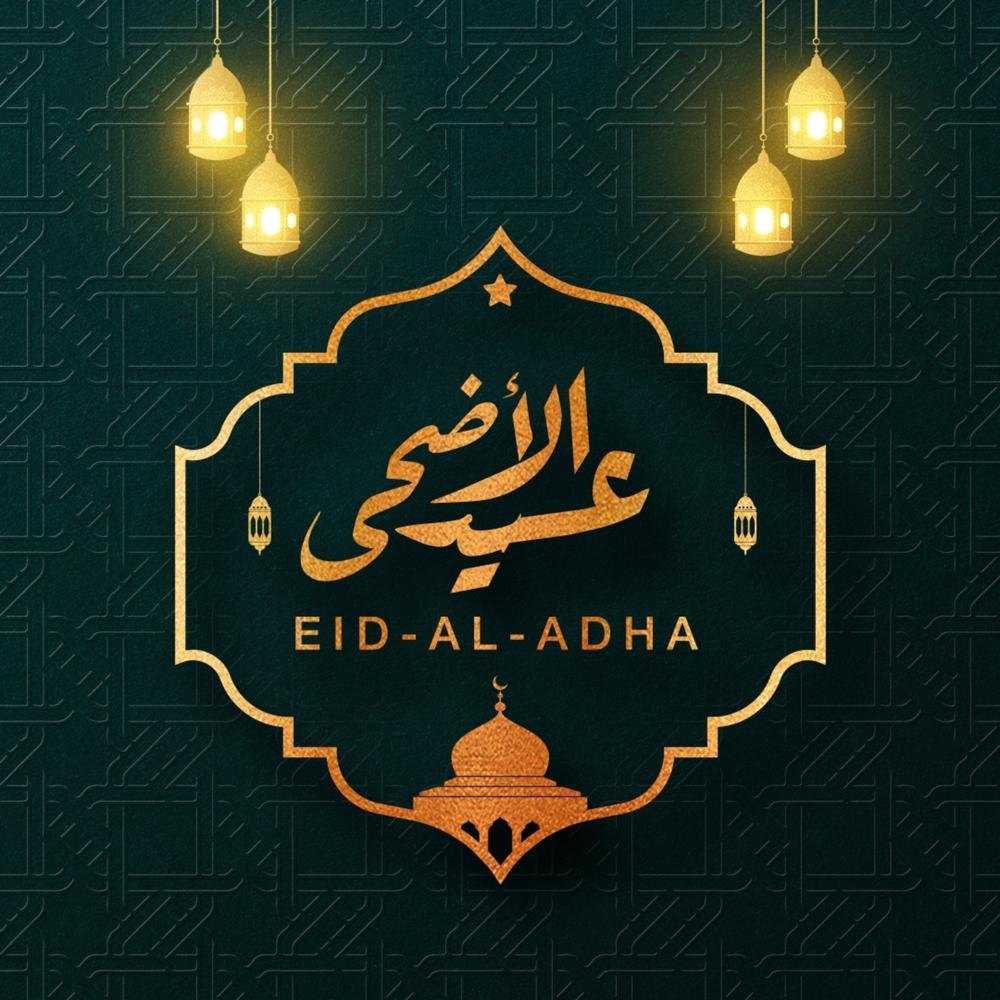
The Eid ul-Adha celebration is one of the two festivals observed by Muslims. It is celebrated annually on the tenth day of Dhul Hijjah, which is the final month of Islamic calendar. Eid ul-Adha is a blessed day given to believers by Allah (SWT) as mentioned in an authentic hadith. The Prophet (SAW) emphasised the importance of Eid in comparison to previous festivals of Madina in the following words.
“Allah has given you instead of them two days that are better than them: the day of al-Adha and the day of al-Fitr.” [Sahih Abi Dawud]
Also known as the festival of sacrifice, Eid ul-Adha falls within the greatest days in the sight of Allah (SWT). The Prophet (SAW) said about Eid ul-Adha:
“The greatest day in the sight of Allah, may He be blessed and exalted, the Day of Sacrifice . . .” [Abu Dawud]
The days of Eid ul-Adha are also the days of offering sacrifice and performing Hajj. It is a great reminder of the life of submission required from a believer. Eid ul-Adha is a symbol of sacrifice and perseverance exemplified by the lives of noble Prophets. It reminds Muslims of the commitment of Prophet Ibrahim (AS) in carrying out the commands of Allah (SWT). His surrender to the will of Allah (SWT) is the reason why Eid ul-Adha is celebrated around the world. The believers strive to achieve closeness of Allah (SWT) by following his example.
Allah (SWT) says in the Quran:
“For each of you We have made a law and a method. Had Allah willed, He would have made a single community of people, but (He did not), so that He may test you in what He has given to you. Strive, then, to excel each other in good deeds. To Allah is the return for all of you. Then Allah shall tell you about that in which you disputed.” [5:48]
Eid ul-Adha is celebrated by proclaiming the greatness of Allah (SWT), participating in Eid prayer, and offering sacrifice. The believers engage in Sunnah acts to observe the special occasion. The recitation of Takbir begins before the day of Eid and continues until 13th Dhul Hijjah. Muslims follow the Prophet’s (SAW) Sunnah by performing the ritualistic bath, wearing nice clothes, and using perfume before going out to the place of prayer. After this, Eid prayer is observed in congregation, followed by collective supplications. On completion of Eid prayer, people exchange Eid greetings with each other and offer Qurbani or make other voluntary donations. It is common to invite family and friends for a nice meal on the day of Eid. Young children receive Eid money or Eid gifts on the blessed occasion.
Eid is characterised by a spirit of sharing, kindness, and joy. It is a time of expressing happiness and gratefulness for the blessings given by Allah (SWT). The Prophet (SAW) said:
“The day of Arafah, the day of Sacrifice (An-Nahr) and the days of Tashriq are our Eid, us Muslims, and they are days of eating and drinking.” [Abu Dawud, 2419]
Eid is a global phenomenon, which manifests unity and diversity. It is not just people living in Muslim countries who observe Eid ul-Adha. Eid ul-Adha is celebrated by Muslims residing in countries around the world. Every region observes the festival of Eid according to their own customs and traditions.
Though the fundamental practices are the same, clothing, food and entertainment can take different forms in different cultures. Pakistan Muslims like to dress in Shawar Kameez, waistcoat and kufi hat. Famous Asian dishes include Kheer, biryani, haleem and Chicken Karahi while snacks such as puri, samosa, kebabs and tikka remain popular for the occasion of Eid. Another important feature of Eid is henna decorations, which begin the night before the festival.
In Arab and African countries, people wear thobes, turbans, traditional hats, and scarves to celebrate Eid. In Egypt, traditional pastries are prepared for Eid and kahek biscuits are eaten with tea in the morning. All through the Middle East, traditional sweets and dishes are prepared and streets are decorated to mark the festival. In some countries, special parades or performances take place. Libyan horsemen in traditional costumes and turbans enhance the festive spirit of Eid.
In some areas, Qurbani is the main spectacle of Eid. People gather to witness the sacrifice and to collect Qurbani meat. Because of Qurbani, this Eid is well-known for barbeque parties and meat-based dishes. People arrange Eid gatherings in their garden, and everyone helps in grilling delicious tikka or kebabs.
Eid ul-Adha is an important time to remember the less fortunate individuals in disadvantaged areas. Qurbani is a great way of sharing nutritious food with those suffering from hunger and starvation. You can also choose to make an additional sacrifice to benefit more needy individuals and families. Apart from Qurbani, you can also contribute towards food packs or Eid gifts for those in need. Visit the donation page of UKIM to support vulnerable people in areas suffering from food poverty.
Copyright © 2025 UKIM All Rights Reserved.
UK Registered Charity Since 1962
Charity Registration No. 250275


